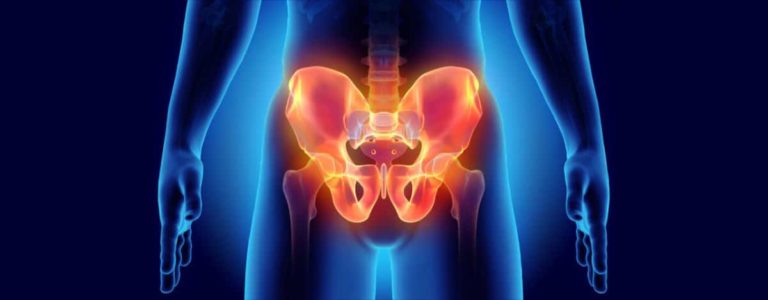
Imagine what your life would be like if you had to stop what you were doing every 20 minutes to go to the bathroom. You’ve done everything you could to try suppressing the urge to pee, including drinking less water, but it still comes back. You attend a cross-fitness class, excited to get back into shape. However, you find yourself having to leave 10 minutes in because you’ve peed your pants doing jumping jacks.
What if it wasn’t a problem with your bladder but rather, your bowels? You’ve dealt with constipation for several months now and you find yourself constantly straining on the toilet, desperate to have a bowel movement so you can no longer feel the pressure. Or perhaps you have the opposite problem and feel like everything you eat passes right through you. You spend most of your social life at home with the comfort of knowing you can run straight to the bathroom when needed.
What if you solely had pain? An unexplainable burning, sharp pain in your pelvis that you carried with you throughout your day. Your relationship with your partner is strained. You haven’t had sex in almost a year because it’s too painful. They try their best to be patient and supportive, but you can tell that their frustration is growing and you’re afraid that they are going to leave you.
These are just a few of the many common problems that both men and women affected by pelvic floor dysfunction have to face. Without proper treatment, such situations can be extremely difficult to deal with and become debilitating. Luckily, physical therapy offers a highly effective, conservative approach to the treatment of pelvic floor dysfunction. With a little bit of added patience and willpower, pelvic floor therapy can aid in reducing or completely eliminating associated symptoms in order to enhance one’s quality of life.
What exactly is pelvic floor dysfunction?…. What is your pelvic floor?
The pelvic floor is a group of muscles and ligaments that attach the front of the pelvis (pubic bone) to the tailbone and form a canopy-like sling. This sling aids in supporting abdominal and pelvic organs which are responsible for controlling bladder, bowel, and sexual activity. When functioning properly, the pelvic floor actually helps to maintain the positioning of these organs against gravity when standing in upright positions. Additionally, it has the ability to contract and relax for the elimination of wastes (both urine and feces), for giving birth, and for sexual function- including arousal, erection, orgasm, and ejaculation. Something to bear in mind is that everyone has a pelvic floor regardless of age, biological sex, gender, and body type!! It is not just an area of focus for women, although the prevalence of dysfunction is higher amongst women than in men.
So how does dysfunction occur?
Very simply put, pelvic floor dysfunction develops when the muscles of the pelvic floor weaken and become either very tight or very lax. It may also occur as a result of damage or sensitivity to the nerves that provide sensation and motor control to the pelvic floor. Such impairments can be caused by direct trauma (i.e giving birth, crush injury, sexual assault), low back or hip injury, damage to the spinal cord, or genetic predisposition. It is also common for pelvic floor dysfunction to exist as a secondary complication to a range of conditions that involve the GI, reproductive, renal, and neurological systems. Examples of such conditions include irritable bowel syndrome, endometriosis in women, interstitial cystitis (painful bladder syndrome), cancer, fibromyalgia, depression, and anxiety.
What are the symptoms of pelvic floor dysfunction?
The symptoms can be based on the type of dysfunction one is diagnosed with and can vary greatly from person to person. The following are some of the most common:
- Pain in the bladder, genitals, or rectum
- Increased urinary urgency and frequency
- Burning with urination
- Heaviness or pressure feeling in the pelvic floor (associated with organ prolapse)
- Constipation and straining with bowel movement
- Painful intercourse
What is pelvic floor therapy and how can it help?
Pelvic floor therapists are well-versed in the anatomy of the pelvic floor and are trained to perform both external and internal examinations. Internal exams are performed by placing a gloved, lubricated finger into either the vagina and rectum in order to assess areas of sensitivity, muscular tone, and strength. Although performing an internal exam may seem daunting or uncomfortable, it is extremely vital for determining what specifically is causing or contributing to the dysfunction. If the muscles are found to be very tight and painful, your therapist may start you on a muscle relaxation program inclusive of various breathing exercises and stretches specific to the pelvic floor. They will also likely perform myofascial release techniques in order to eliminate areas of tension within affected muscles. Conversely, if weakness is the primary problem, a progressive muscle strengthening program would be indicated.
Performing what is known as a “kegel” is the most commonly used strengthening exercise for the pelvic floor. It is performed by squeezing and contracting the pelvic floor as if trying to stop the flow of urine. For true strength gains, it is recommended that kegels should be performed for 10 repetitions of 10-second holds, at least 3 times a day. This may seem like a lot. But the great thing about it is that you can perform it anywhere at any time, and no one would ever know! It is important to note, however, that kegels should NOT be performed by those with tight pelvic floor muscles as it can increase the tension present and potentially worsen associated symptoms. The muscle tightness or “hypertonicity” must first be addressed before a strengthening program can be initiated.
Alongside muscle retraining, pelvic floor therapists will also analyze your lifestyle habits in order to determine if any changes need to be made, such as diet, hydration, stress, or toilet use. There is a lot that can contribute to pelvic floor dysfunction outside the pelvic floor, so it’s vital that such a holistic approach is taken.
Pelvic floor dysfunction can be a very sensitive issue to discuss, and for this reason, many people suffer in silence hoping they will be able to manage symptoms on their own. If you know of any loved ones- family, friends, colleagues, or even yourself- that are experiencing pelvic floor problems, I encourage you to spread awareness and suggest to them the option of pelvic floor physical therapy. It can truly be a life-changing experience.
#teamcynergy #cynergyphysicaltherapy #pelvicfloortherapy #pelvicfloordysfunction #urinaryurgency #painfulurination #constipation #pelvicpain #painwithsex #healing #relaxation #strengthening #we💜healingourpatients
